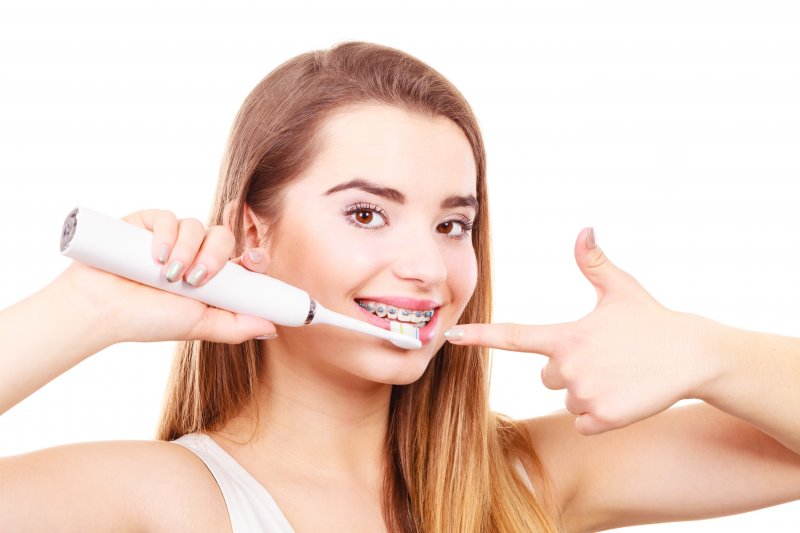
Maintaining healthy teeth and gums is easy when nothing is standing between your tooth enamel and toothbrush. However, once you add metal brackets and wires into the equation, brushing and flossing with braces can become a bit tricky. Fortunately, some helpful techniques and instruments can make the process much easier and feel less cumbersome. In this article, you’ll discover how to effectively clean and maintain your smile while undergoing orthodontic treatment.
Brushing with Braces 101
Brushing your teeth is an important component of any good oral hygiene routine. With or without braces, using the right toothbrush and practicing an effective technique will ensure bacteria and plaque do not accumulate and cause problems for your smile. While wearing braces, you’ll need to adjust your routine to ensure you get around those metal brackets and underneath your wire. To do this, follow these simple guidelines:
- Start by rinsing your mouth to help loosen any food particles that may be stuck in your braces.
- Begin brushing using an electric, manual, or another specialized toothbrush that is designed specifically for orthodontics. You’ll want to tilt the brush to a 45-degree angle to ensure you adequately clean near the gum line.
- Angling your brush downward, you’ll need to clean the top of your brackets before switching your brush’s position and cleaning the bottom of your brackets, angling up.
It’s also important that you brush twice each day for two full minutes or after every meal.
Flossing with Braces 101
When attempting to floss between braces, you may think it’s hopeless because of the extra time needed to maneuver around your brackets and wires. The truth is that while it is more time-consuming, it is absolutely necessary because of the potential to develop gum disease. To ensure you are flossing correctly, all you’ll need to do is:
- Use around 18 inches of dental floss when starting your routine.
- Purchase a floss threader to help with the process of moving the dental floss along your smile and between each tooth. Be mindful not to pull or push down with the floss but instead move it back and forth along the sides of your tooth.
- Buy a water irrigator if regular floss proves to be too difficult. The water pressure that is pushed out will help to dislodge food particles that are stuck between teeth.
- Don’t forget to use mouthwash after brushing and flossing, as this will remove additional bacteria left behind.
It is advised that you floss at least once a day to avoid bacteria and plaque building between your teeth and causing gum disease to develop.
By following these simple instructions, you can take better care of your smile while wearing braces. If at any point you are struggling to adequately brush or floss your teeth, do not be afraid to speak to your dentist or orthodontist and ask for help.
About the Author
Dr. Susan Podray-Donovan is a board-certified orthodontist who believes in the importance of a healthy smile for all patients. She and her team at Serenity Orthodontics offer a multitude of orthodontic solutions design to treat all types of dental problems, including overcrowding, spaces between teeth, and misaligned bites. While wearing traditional braces, she can offer tips and techniques to help you properly brush and floss around your brackets and wires, ensuring that you maintain a healthy smile throughout your orthodontic treatment. If you have questions about cleaning your teeth while wearing braces, visit our website or call (470) 589-4475.
